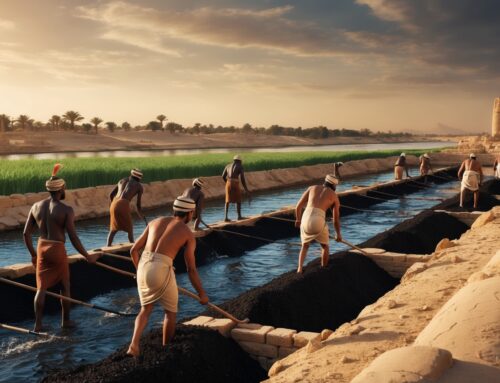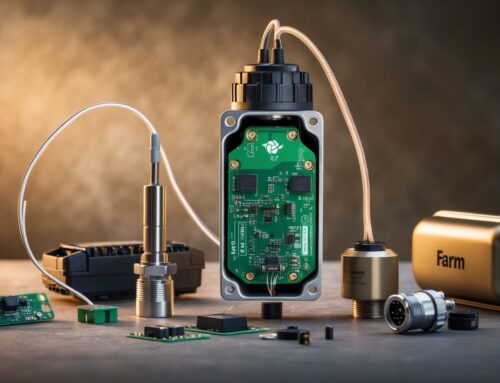In today’s world, data-driven decision-making is transforming industries, and agriculture is no exception. Predictive analytics is one of the most powerful tools available to modern farmers, allowing them to make informed decisions based on data, models, and machine learning. By analyzing past and present data, predictive analytics can help forecast future conditions, enabling farmers to prepare for challenges and optimize their operations. In this post, we’ll explore what predictive analytics is, provide some real-world examples of its use in agriculture, and explain how it can be applied to soil moisture management.
What is Predictive Analytics?
Predictive analytics involves using historical data, statistical algorithms, and machine learning techniques to predict future outcomes. It is used to identify patterns and trends that can help guide decision-making. In agriculture, predictive analytics can help farmers make better decisions about planting schedules, irrigation, pest management, and more.
Predictive analytics relies on data collected from various sources, such as soil sensors, weather stations, satellite imagery, and historical records. By processing this data using artificial intelligence (AI) and machine learning, farmers can receive valuable insights that help them respond proactively to changing conditions rather than reacting after problems have already occurred.
Examples of Predictive Analytics in Agriculture
Predictive analytics can be applied in various aspects of farming, from weather forecasting to pest control. Here are some examples of how predictive analytics is being used on farms:
1. Weather Prediction and Crop Planning
Weather is one of the most critical factors in agriculture. Predictive analytics, combined with weather forecasting models, can help farmers plan their planting and harvesting schedules more effectively. By analyzing weather patterns, farmers can determine the best times to plant seeds and harvest crops, minimizing the risk of damage due to adverse weather conditions. Predictive models can also help identify potential frost or drought periods, allowing farmers to take preventive measures.
2. Pest and Disease Forecasting
Pests and diseases can devastate crops if not managed properly. Predictive analytics can help anticipate pest outbreaks by analyzing environmental factors such as temperature, humidity, and crop conditions. Machine learning algorithms can detect correlations between these factors and pest activity, enabling farmers to apply pest control measures before an outbreak occurs. This approach not only helps protect crops but also reduces the need for excessive pesticide use, promoting more sustainable farming practices.
3. Yield Prediction
Yield prediction is a critical aspect of farm management. By using predictive analytics, farmers can estimate crop yields based on factors such as soil quality, weather conditions, and crop health. These predictions help farmers plan for harvest, optimize the use of fertilizers, and make informed decisions about selling their produce. AI models can also identify trends in crop growth, providing valuable insights for maximizing yields in future growing seasons.
4. Predictive Analytics for Soil Moisture Management
One of the most practical applications of predictive analytics is in soil moisture management. By combining real-time soil moisture data with weather forecasts, predictive models can estimate how moisture levels will change over time. This information helps farmers make informed decisions about when and how much to irrigate, ensuring that crops receive adequate water without over-irrigation.
For example, Terrestream’s Irrigauge soil moisture sensors provide real-time data that can be fed into a predictive model to forecast moisture availability for the coming days. By integrating AI and machine learning, farmers can receive recommendations on optimal irrigation schedules based on expected weather conditions, historical soil moisture trends, and crop water needs. This ensures efficient use of water resources, reducing waste and promoting sustainability.
The Benefits of Predictive Analytics for Farmers
The use of predictive analytics in farming offers numerous benefits, including:
Improved Resource Efficiency
Predictive analytics helps farmers optimize the use of resources like water, fertilizers, and pesticides. By forecasting future conditions, farmers can apply these inputs more precisely, reducing waste and minimizing environmental impact.
Risk Mitigation
Farming is inherently risky due to factors like weather variability and pests. Predictive analytics helps mitigate these risks by providing early warnings and allowing farmers to take preventive actions. Whether it’s adjusting irrigation schedules before a heatwave or applying pest control measures before an outbreak, predictive analytics empowers farmers to make proactive decisions.
Increased Crop Yields
By optimizing irrigation, fertilization, and pest control, predictive analytics helps improve crop health and productivity. When farmers can make data-driven decisions that keep crops in optimal growing conditions, they are more likely to achieve higher yields.
Cost Savings
Efficient use of resources and reduced crop losses translate to cost savings for farmers. Predictive analytics helps farmers avoid unnecessary expenses by preventing over-irrigation, over-fertilization, and crop damage due to pests or adverse weather.
How Predictive Analytics Works in Practice
Let’s consider a practical scenario: a farmer uses soil moisture sensors, weather stations, and satellite data to monitor their fields. The data from these sources is fed into a predictive analytics model that forecasts soil moisture levels for the coming week. The model considers factors like soil type, recent rainfall, temperature, and crop water needs to provide a detailed irrigation schedule.
Using this information, the farmer can adjust their irrigation plan to ensure the crops receive the right amount of water. If the model predicts a dry spell, the farmer can increase irrigation to maintain adequate soil moisture. On the other hand, if rain is expected, the model may recommend reducing irrigation to avoid over-saturating the soil.
The integration of AI and machine learning allows the model to improve over time. As more data is collected, the model becomes better at predicting soil moisture levels and optimizing irrigation schedules. This continuous learning process ensures that farmers are always working with the most accurate and up-to-date information available.
Conclusion: Embracing Predictive Analytics for a Smarter Farm
Predictive analytics is revolutionizing the way farmers manage their fields, providing insights that were once impossible to obtain. By using data, AI, and machine learning, farmers can anticipate challenges, optimize resource use, and make better decisions for their crops and the environment. Whether it’s predicting soil moisture levels, planning for weather changes, or preventing pest outbreaks, predictive analytics is a valuable tool for modern farming.
With Terrestream’s advanced tools like Irrigauge, FieldLink, and FieldHub, farmers can harness the power of predictive analytics to make smarter decisions, improve efficiency, and ensure the health and productivity of their fields. The future of farming is data-driven, and predictive analytics is leading the way to more sustainable, efficient, and resilient agricultural practices.





